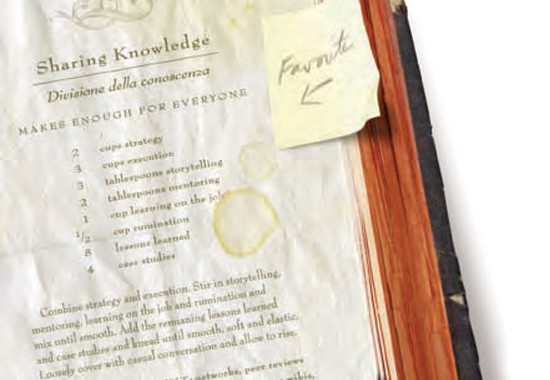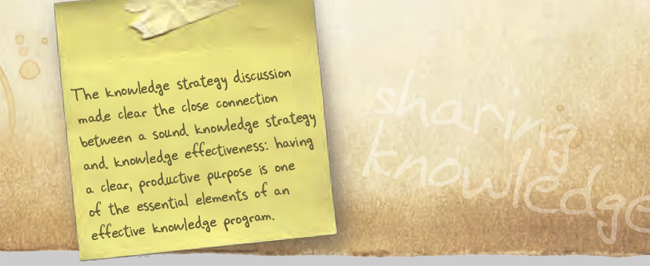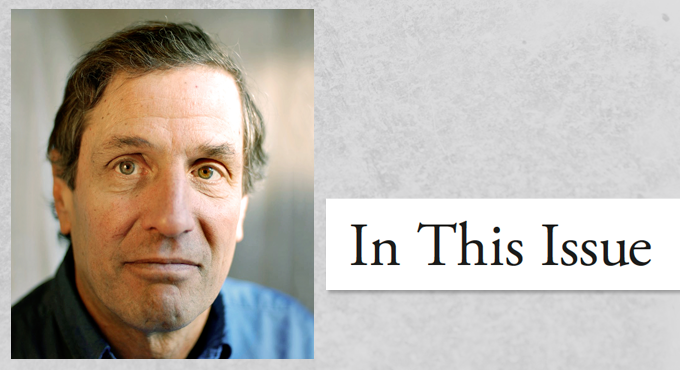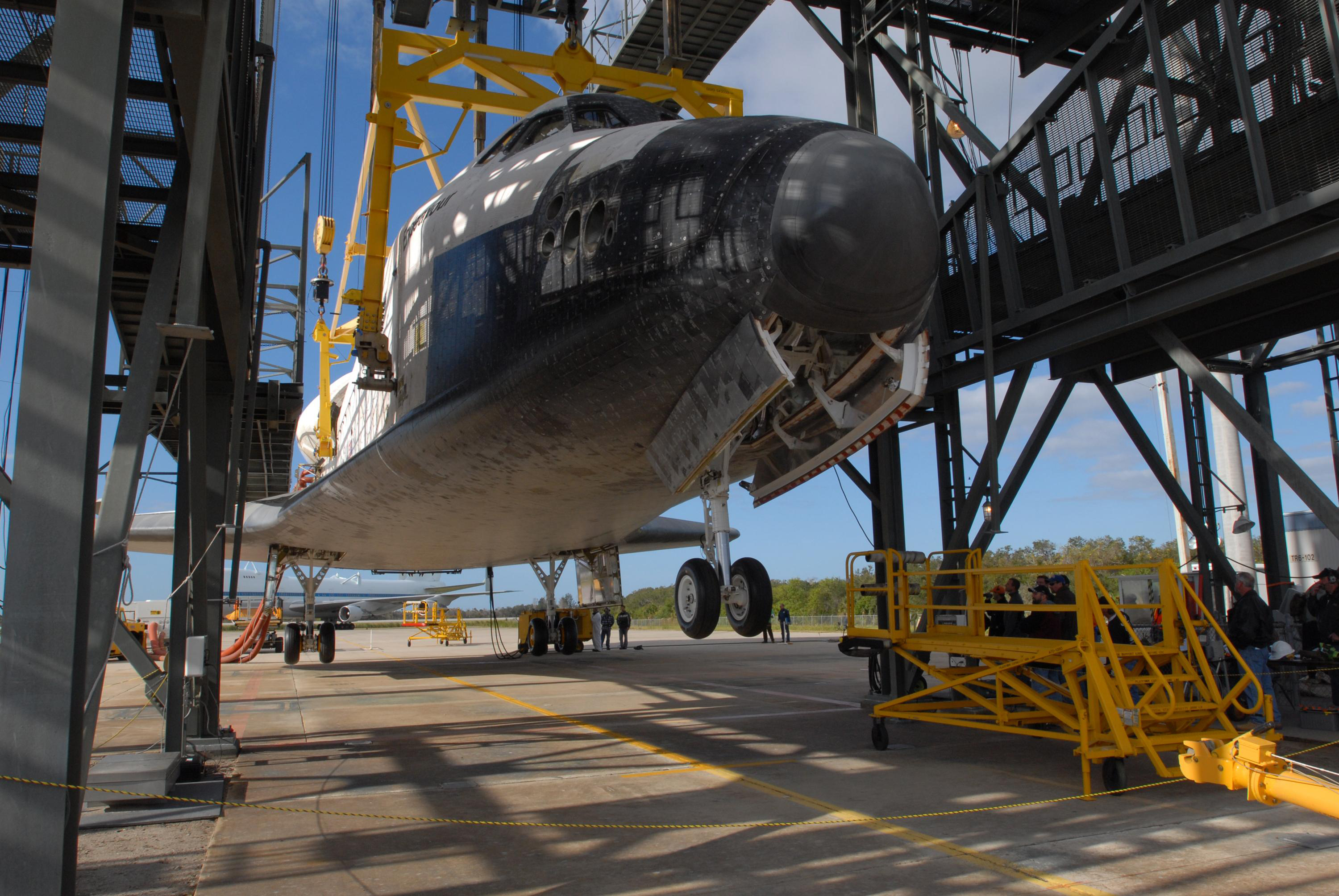
By Don Cohen and Matthew Kohut
The Academy’s first Knowledge Forum brought together people from several industries and countries.
 NASA’s success depends on how well it develops, acquires, and uses knowledge. Its complex science and exploration projects demand a high level of technical expertise and exceptional knowledge of how to get work done—that is, how to direct and organize the efforts of the people and organizations that execute its projects. Recognizing the central importance of effective knowledge use and knowledge sharing across the agency, the Academy of Program/Project and Engineering Leadership (APPEL) held its first knowledge forum in Washington, D.C., on October 15, 2009, bringing together people engaged in knowledge work at several NASA centers and knowledge experts from other organizations including MITRE, the World Bank, Educational Testing Service (ETS), Fluor, the Department of Energy, Petrobras, and the International Centre for Complex Project Management.
NASA’s success depends on how well it develops, acquires, and uses knowledge. Its complex science and exploration projects demand a high level of technical expertise and exceptional knowledge of how to get work done—that is, how to direct and organize the efforts of the people and organizations that execute its projects. Recognizing the central importance of effective knowledge use and knowledge sharing across the agency, the Academy of Program/Project and Engineering Leadership (APPEL) held its first knowledge forum in Washington, D.C., on October 15, 2009, bringing together people engaged in knowledge work at several NASA centers and knowledge experts from other organizations including MITRE, the World Bank, Educational Testing Service (ETS), Fluor, the Department of Energy, Petrobras, and the International Centre for Complex Project Management.
The daylong discussion was organized around three panels that explored, respectively, knowledge strategy, knowledge effectiveness, and knowledge at NASA. Panelists’ presentations were limited to fifteen minutes each to ensure time for knowledge-sharing conversations.
Knowledge Strategy: Doing the Right Thing
Northeastern University Professor Michael Zack, moderator of the first panel, defined knowledge strategy as “doing the right thing.” In the early days of knowledge management, many organizations tried to make as much knowledge as possible available to as many people as possible, but that kind of broad approach rarely, if ever, produced the hoped-for benefits. A knowledge strategy identifies the particular areas of knowledge needed to help the organization reach specific goals and sometimes defines new goals that the organization’s knowledge makes achievable. (Zack used the Polaroid Corporation as an example of a company that failed to capitalize on knowledge that could have led it in a new, profitable direction: the knowledge of the people at Polaroid who understood digital imaging was never put to use.) The SWOT strategic-planning method (analyzing strengths, weaknesses, opportunities, and threats) can be applied to organizational knowledge to determine the kinds of knowledge the organization should acquire, strengthen, share, and use.
T. J. Elliott of ETS reinforced the importance of what he called “knowledge intention”—having clear, convincing goals for knowledge efforts. Without a specific purpose, he said, online communities designed to share knowledge become “ghost towns.”
Klaus Tilmes, advisor to the World Bank’s Knowledge Strategy Group, agreed that the key question is “what knowledge do we need to achieve our goals?” One of the ways to answer the question, he suggested, was to look at levels of dissatisfaction among knowledge workers. The aspects of their work that thwarted or frustrated them were likely targets of efforts to make needed knowledge available. According to Tilmes, organizations need both good internal networks (to understand what knowledge resources exist) and external networks (to understand opportunities and threats) to be able to define valuable new goals. He cautioned, though, that gaining understanding is only half the battle. What leaders and decision makers listen to—and act on—is obviously critical, and they sometimes fail to heed important knowledge. It may be true that, in some circumstances, knowledge is power, but too often power trumps knowledge.
Knowledge Effectiveness: Doing Things Right
Moderating the second panel, Laurence Prusak, editor-in-chief of ASK Magazine, emphasized the complexity of knowledge, which, unlike data and information, cannot be readily packaged and shipped. Understanding that fact is critical to understanding how to create, exchange, and use knowledge effectively. The knowledge strategy discussion made clear the close connection between a sound knowledge strategy and knowledge effectiveness: having a clear, productive purpose is one of the essential elements of an effective knowledge program. People share and seek knowledge only when they see the value of doing so. Even with a clear knowledge strategy in place, however, other factors influence the effectiveness of knowledge work.
Jean Tatalias, director of Knowledge Services at MITRE, talked about the key role “connectedness” plays in successful knowledge work. The powerful, often informal social connections among people in organizations are an essential mechanism for knowledge exchange. The trust, understanding, and mutual goodwill that characterize these relationships make the sharing of expertise possible. MITRE supports various kinds of connectedness. An information-technology system that includes documents and contact information about experts increases the “findability” of knowledge. Frequent technical-exchange meetings and collaboration on projects foster knowledge sharing and strengthen personal networks.

Tatalias also mentioned the relationship between organizational culture and knowledge effectiveness. She believes that MITRE’s mission-oriented, not-for-profit culture encourages people to share what they know and seek the knowledge they need.
To carry out its large engineering and construction projects, Fluor works to share knowledge across projects as well as within large, often geographically dispersed project teams. John McQuary, vice president of the Technologies and Strategies Organization at Fluor, described the company’s investment in communities of practice and other knowledge endeavors to ensure that the knowledge of some 3,500 subject-matter experts in 1,000 areas is preserved and made available when and where it is needed. The company’s leadership actively supports the communities and their Web sites with resources and public recognition of outstanding contributions to knowledge sharing. McQuary says that Fluor also “puts people side by side for a number of years” to ensure the transfer of expertise. A subject-matter- expert protg program has a similar goal. Typically, the protgs are not immediate successors in a given role, but younger employees who will carry the expertise into the future.
Alexandre Korowajczuk, corporate knowledge manager for Petrobras, described how the Brazilian oil company uses storytelling to communicate the organization’s values to its flood of new hires. The storytelling sessions that bring together veterans and newcomers convey some “how-to” knowledge about oil exploration and drilling, but their most important content is emotional, expressing the commitment and determination of Petrobras employees. Like MITRE (and NASA), knowledge sharing at Petrobras benefits from a sense of mission, in this case an awareness of the importance of the company to Brazil’s economic, social, and environmental well-being. (See “Petrobras and the Power of Stories“)
Knowledge at NASA
Don Cohen, managing editor of ASK Magazine, moderated a panel of practitioners engaged in knowledge work at NASA. He noted that no large organization is one thing—it has different kinds of characteristics in different places—and asked if NASA’s centers can be expected to foster knowledge development and sharing in the same ways despite differences in culture, organization, and technical expertise.
Manson Yew, manager of the NASA Engineering Network (NEN), discussed efforts to build online communities of practice for engineering discipline areas that connect engineers across the agency who would not necessarily work together. The NEN focuses on twenty-five key engineering disciplines with the goal of connecting engineers to sources of both explicit and tacit knowledge across the agency.
Dave Lengyel, risk and knowledge management officer for the NASA Exploration Systems Mission Directorate, said that technology is not the problem with knowledge sharing. Like MITRE’s Tatalias and Fluor’s McQuary, he believes the key is building a community. He discussed the DART (Demonstration of Autonomous Rendezvous Technology) mission as a NASA case study of a knowledge and communication failure.
APPEL Director Ed Hoffman noted that APPEL addresses the question of how to develop competence, particularly in the absence of certainty. He pointed out that performance happens at the team level in a project-based organization like NASA, and said that organizational sustainability was a large focus of APPEL’s knowledge-sharing effort since project teams often don’t have the time or resources to connect with one another. Given the unique nature of NASA’s missions, knowledge sharing is also a means of preserving the agency’s legacy.
More Articles by Don Cohen
- In This Issue (ASK 37)
- Interview with George Morrow (ASK 36)
- In This Issue (ASK 36)
- Interview with Alexander Laufer (ASK 35)
- In This Issue (ASK 35)
- + View More Articles
More Articles by Matthew Kohut
- Rocketing from the Past to the Future (ASK 37
- Building the Team: The Ares I-X Upper-Stage Simulator (ASK 34)
- A New Design Approach: Modular Spacecraft (ASK 33)
- The Quest for Good Ideas (ASK 33)
- Shaping the Space Age: The International Geophysical Year (ASK 32)
- + View More Articles








